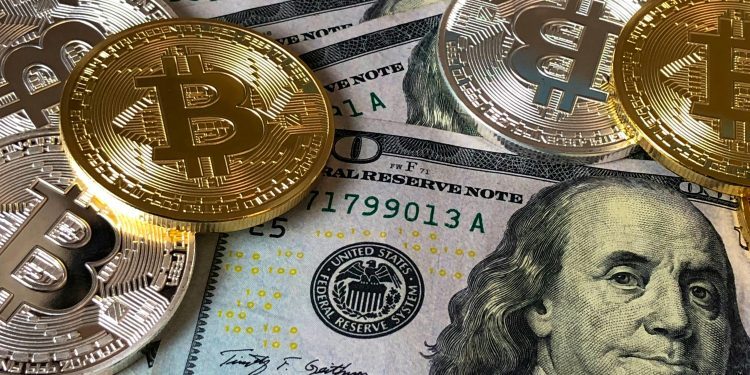Bitcoin (BTC), often referred to as “digital gold,” is evolving beyond a store of value into a viable means of payment for everyday transactions. Thanks to the development of user-friendly wallets, Lightning Network integration, and increasing merchant acceptance, Bitcoin can now be used for more than just long-term investment. This guide explores how to use Bitcoin for daily payments, including where to spend it, how to set up a Bitcoin wallet, and the challenges you might encounter.
1. Setting Up Your Bitcoin Wallet
To use Bitcoin for payments, you’ll need a Bitcoin wallet—a tool that allows you to store, send, and receive BTC securely. Here’s a step-by-step process for setting one up:
Choosing the Right Wallet
Bitcoin wallets come in two main types:
- Hot Wallets: These are software wallets connected to the internet, suitable for frequent transactions.
- Examples: BlueWallet, Electrum, and Muun Wallet.
- Use Case: Ideal for everyday payments but less secure than cold wallets.
- Cold Wallets: Offline wallets that store your Bitcoin securely, like hardware wallets (e.g., Ledger Nano X, Trezor) or paper wallets.
- Use Case: Recommended for storing large amounts of Bitcoin.
How to Set Up a Bitcoin Wallet
- Download a wallet app from a trusted source or purchase a hardware wallet.
- Create a new wallet by following the setup instructions.
- Write down your seed phrase (a series of 12-24 words) and store it safely—this phrase is the key to restoring your wallet.
- Fund your wallet by receiving Bitcoin from an exchange or another wallet.
Your wallet will generate a Bitcoin address that you can share with others to receive payments.
2. Using the Lightning Network for Fast and Cheap Payments
Bitcoin transactions on the base blockchain can be slow and expensive, particularly during periods of congestion. To overcome these limitations, you can use the Lightning Network—a second-layer solution that enables instant, low-fee transactions.
How to Use Bitcoin with the Lightning Network
- Open a Lightning-compatible wallet (e.g., Muun, Phoenix, or BlueWallet).
- Transfer Bitcoin from your regular wallet to your Lightning wallet.
- Pay instantly by scanning the recipient’s Lightning invoice or QR code.
Lightning transactions are ideal for microtransactions and everyday purchases, such as buying coffee, groceries, or tipping online creators.
3. Where Can You Use Bitcoin for Daily Payments?
Merchants Accepting Bitcoin in 2024
More businesses are embracing Bitcoin for payments, including both online and physical stores. Some key areas where Bitcoin can be used include:
- Retail Shopping
- Overstock.com and Newegg: These e-commerce giants accept Bitcoin for electronics and home goods.
- Whole Foods: Through third-party apps like SPEDN, Whole Foods supports Bitcoin payments.
- Travel and Hospitality
- Travala: Book flights and hotels with Bitcoin.
- AirBaltic and LATAM Airlines: Some airlines accept BTC for flight bookings.
- Hotels and Hostels: Several accommodations globally accept Bitcoin via booking platforms.
- Food and Beverages
- Some local cafes and restaurants now accept Bitcoin directly or via Lightning Network wallets.
- Use Bitrefill to buy gift cards for restaurants and food delivery services like Uber Eats using Bitcoin.
- Online Subscriptions and Services
- Microsoft: You can top up your Microsoft account with Bitcoin to buy apps and games.
- ExpressVPN: Pay for your VPN subscription with Bitcoin for extra privacy.
- Twitch: Tip streamers with Bitcoin and Lightning payments.
- Gift Cards and Marketplaces
- Bitrefill offers gift cards for platforms like Amazon, Netflix, and Starbucks using Bitcoin.
4. How to Make a Bitcoin Payment Step-by-Step
Here’s a typical process for using Bitcoin to pay for goods or services:
- Select Bitcoin as the Payment Option: On the merchant’s checkout page or point of sale.
- Scan the QR Code or Copy the Bitcoin Address: The merchant will provide a Bitcoin wallet address or QR code.
- Confirm the Payment Amount: Ensure the Bitcoin equivalent is correct to avoid overpaying.
- Complete the Payment: Open your Bitcoin or Lightning wallet, enter the amount, and confirm the transaction.
- Wait for Confirmation: On-chain payments may take up to 10 minutes to confirm, while Lightning transactions are almost instant.
5. Pros and Cons of Using Bitcoin for Payments
Advantages
- Global Accessibility: Bitcoin allows borderless transactions, enabling international payments without currency conversion fees.
- Lower Fees with Lightning Network: Lightning transactions cost just fractions of a cent, making them ideal for small payments.
- Privacy Protection: Bitcoin transactions don’t require personal information, offering more privacy compared to traditional payment methods.
- Hedge Against Inflation: Using Bitcoin may protect value in countries with unstable fiat currencies.
Challenges
- Volatility: Bitcoin’s price can fluctuate rapidly, making it tricky for merchants to set fixed prices.
- Limited Acceptance: Despite growing adoption, Bitcoin is not yet universally accepted.
- Technical Complexity: Setting up and managing wallets may feel complicated for new users.
- Taxation: In some countries, spending Bitcoin triggers capital gains tax, complicating accounting for frequent users
.
6. Managing Bitcoin Volatility When Spending
Because Bitcoin’s price is volatile, both users and merchants can face valuation challenges during transactions. Here are some strategies to manage volatility:
- Stablecoin Integration: Some merchants convert Bitcoin payments immediately into stablecoins (like USDT) to protect against fluctuations.
- Bitcoin Payment Processors: Platforms like BitPay and Strike automatically convert Bitcoin into fiat at the point of sale, reducing risk for merchants.
- Limit Large Transactions: Use Bitcoin primarily for small purchases to minimize exposure to volatility.
7. Future Trends in Bitcoin Payments
a) Increasing Merchant Adoption
As platforms like BitPay make it easier for businesses to accept Bitcoin, adoption is expected to grow. Major brands may integrate Bitcoin payments directly into their websites or apps.
b) Wider Lightning Network Adoption
The Lightning Network will play a crucial role in scaling Bitcoin for daily payments. With new upgrades, Lightning wallets will become easier to use, attracting more users to the network.
c) Bitcoin Debit Cards
Several crypto companies now offer Bitcoin debit cards, allowing users to spend BTC wherever traditional debit cards are accepted. Companies like Crypto.com and Coinbase offer cards that convert Bitcoin into fiat at the point of sale.
8. Conclusion: Is Bitcoin Ready for Daily Use?
Bitcoin is increasingly becoming a viable payment method for everyday transactions, thanks to the development of the Lightning Network and growing merchant acceptance. While challenges like volatility and limited adoption remain, the ecosystem is evolving rapidly. For those who embrace Bitcoin, it offers freedom from traditional financial systems, global accessibility, and low-cost payments.
With more businesses, platforms, and wallets adopting Bitcoin, the future of crypto payments looks promising. Whether you’re buying groceries, tipping a creator, or booking a flight, Bitcoin’s integration into daily life is getting easier—bringing us closer to a world where cryptocurrencies become a seamless part of the economy.
















